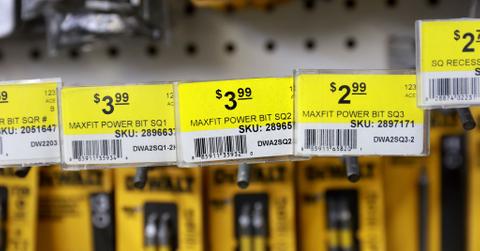Should You Invest in an Inflation ETF? Pros and Cons
Inflation ETFs seek to capitalize on or quell inflation. Are they worth investing in amid a bear market? Let's look at the pros and cons.
Aug. 1 2022, Published 3:03 p.m. ET
Despite a bear market rally in July, forward guidance remains risky and a recession is quickly becoming a matter of when and not if. The latest inflation data shows the cost of living up 9.1 percent in the 12 months ending in June and the broad market remains tentative. Still, inflation-based exchange-traded funds (ETFs) remain an option for investors.
But does that mean inflation ETFs are a good option for you? Look at your options for popular inflation ETFs on the market and weigh how your risk management might look.
There are some popular inflation ETFs on the market.
There are two key ways to look at inflation ETFs:
ETFs that track Treasury Inflation-Protected Security (TIPS) bonds, whose principal value rises and shrinks in cahoots with inflation
ETFs that seek to fight inflation by investing in sectors that can help bring parity to supply and demand (think categories like raw materials, energy, gold and other commodities, interest rate options, and more).
Some larger funds include:
iShares TIPS Bond ETF (TIP): Up marginally in July and only three percent in the past five years, performance for TIP is lacking
Vanguard Short-Term Inflation-Protected Securities ETF (VTIP): Up marginally in July and just 1.8 percent in the past five years, VTIP doesn’t show much improvement
Materials Select Sector SPDR Fund (XLB): Performance here is improved, with a 4.37 percent gain in July and 41.74 percent in the past five years (though one-year returns sit at -6.89 percent)
Horizon Kinetics Inflation Beneficiaries ETF (INFL): Seemingly a more prosperous option, INFL is up 7.21 percent in July and 24.53 percent in the past five years
Invesco Optimum Yield Diversified Commodity Strategy No K-1 ETF (PDBC): Rather than just investing in individual commodities directly, PDBC spreads the capital. It’s down 4.56 percent in July and 14.04 percent for the 12-month period but up 6.44 percent in the last five years
Simplify Interest Rate Hedge (PFIX): Hedging interest rate movements, PFIX is down 15.25 percent for the month of July and up 20 percent for the year (though down marginally from a five-year perspective)
Many of these funds are more appropriate for strategic short-term trading for qualified investors due to the volatility that would accompany a buy-and-hold strategy.
There's a problem with ETFs in a bear market.
As an investor, don’t overlook the commissions, expenses, fluctuations, and other risks that are unique to ETFs. Many ETFs are lucrative, especially in times of broad stock market prosperity, but the current bear market suggests we’re facing a type of recession we haven’t seen before. As such, the low liquidity and lack of control could cause problems for your portfolio in the near future.
Due to the unpredictable nature of inflation ETFs, it may behoove investors seeking to manage risk in a bear market to avoid these funds (for now). Plus, we don’t know how long inflation will last. Since we’re already a few years into rising expenses, the time may have passed. Alternatively, investors may look at risk-assessed credit spreads when investing in a bear market.


